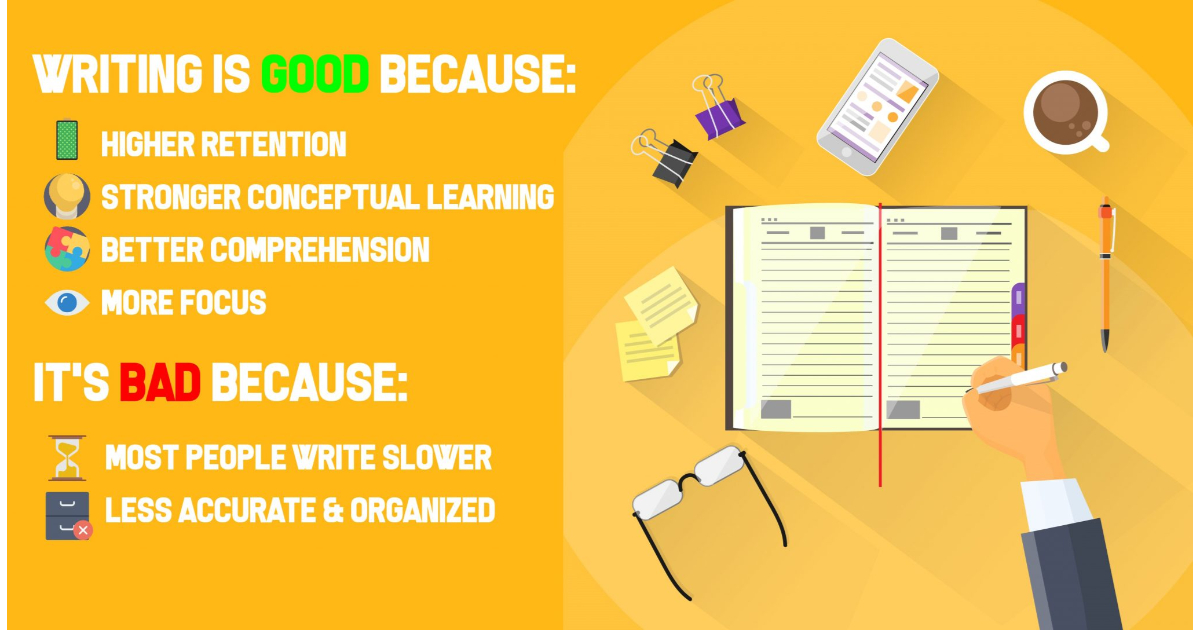The debate between written and printed materials continues to thrive in today’s digital age. Written content, often associated with digital formats such as emails, blog posts, and eBooks, offers unmatched convenience and accessibility. It allows individuals to easily create, share, and edit text, making it a popular choice for those who value speed and efficiency. Another significant advantage of written content is storing vast amounts of information electronically without occupying physical space. Additionally, digital written materials often include features like hyperlinks, multimedia, and search functions that enhance the reading experience.
On the other hand, printed content, including books, newspapers, and magazines, has a long-standing reputation for fostering deeper engagement and focus. Many readers find the tactile experience of holding a printed book or newspaper more immersive, often leading to better comprehension and retention of information. Studies suggest that physical materials encourage more mindful reading habits than digital counterparts, sometimes resulting in distraction or fragmented reading. Printed materials also have a certain aesthetic appeal, as they can be collected, shared, and displayed, offering a sense of permanence.
Despite the benefits of both mediums, the choice between written and printed content ultimately depends on individual preferences and the specific context in which the information is consumed. Written digital content is ideal for quick, on-the-go access to information. However, many still gravitate toward printed materials regarding focused reading and in-depth understanding. Both formats offer unique advantages that cater to different needs, making them equally valuable in today’s information-driven world.
Introduction to the Debate: Written vs. Printed Media
The ongoing debate between written and printed media has gained more traction with the rise of digital platforms. Both formats have their unique advantages, catering to different preferences and lifestyles. Written content, often digital, is praised for its accessibility and ease of use. It allows people to access a wealth of information on the go, whether through smartphones, tablets, or laptops. On the other hand, printed media provides a more traditional, hands-on experience, which many argue leads to deeper engagement with the content. Written vs. Printed
This debate isn’t just about convenience versus tradition; it also touches on how we process and retain information. Digital content may offer faster access, but printed materials can lead to more focused, distraction-free reading. As technology evolves, the lines between written and printed media may blur, but the core differences remain significant for readers who value either convenience or immersion.
The Evolution of Written and Printed Formats
The evolution of written and printed formats has been profound over centuries. Written content initially started with stone tablets, scrolls, and manuscripts, serving as the primary method of preserving and communicating knowledge. The invention of the printing press in the 15th century revolutionized the way information was disseminated, making printed books, newspapers, and documents more widely available to the public. This shift enabled mass education and literacy, transforming society.
With the advent of the internet, written content experienced another leap forward. Today, we consume written content on digital platforms through blogs, articles, and eBooks. Technological advancements have driven the evolution from print to written formats, but they raise questions about the future of physical books and how both forms of content can coexist harmoniously.
Convenience and Accessibility: Written Content in the Digital Age

One of the most significant advantages of written content in the digital age is its convenience and accessibility. Digital content can be created, shared, and edited instantly, making it a powerful tool for communication in our fast-paced world. Whether through email, eBooks, or online articles, people can access a wide range of written materials at their fingertips, eliminating the need to carry physical books or documents.Written vs. Printed
Furthermore, the ability to store vast amounts of information in small digital devices, coupled with search functions, hyperlinks, and multimedia elements, enhances the reading experience. Digital content is also customizable; readers can adjust font sizes and background colors and even translate text into different languages. This flexibility makes written content accessible to people of all abilities and preferences.
Tactile Experience: The Immersive Nature of Printed Materials
Printed materials offer a tactile experience that many readers find more engaging than digital formats. Holding a physical book or newspaper allows for a sense of immersion that screens often cannot replicate. The texture of the paper, the sound of pages turning, and even the scent of a book can enhance the overall reading experience, creating a deeper connection to the material.
Moreover, printed content tends to minimize distractions, encouraging more focused reading. When engaging with physical books, readers are less likely to be interrupted by notifications or pop-ups, which are common in digital formats. Printed media provides a concentration level for those seeking a quiet, uninterrupted reading experience that digital screens may lac k.Written vs. Printed
Information Retention: How Written and Printed Media Differ
Ongoing research suggests that printed media leads to better information retention than digital formats. Studies indicate that people often remember content more effectively when reading from a physical book or printed document than when scrolling through digital text. This could be due to the tactile engagement, slower pace of reading, and reduced distractions that printed materials offer.
Digital content, while accessible and convenient, can sometimes result in skim reading, where readers quickly scan through the material without fully processing it. Additionally, overwhelming online information can lead to shorter attention spans. However, digital content still has advantages for research, especially interactive elements that aid comprehension.
Environmental Impact: The Sustainability of Written vs. Printed Media

The environmental impact of written and printed media is a growing concern today. Printed materials, especially books and newspapers, require paper production, ink, and transportation, contributing to deforestation, carbon emissions, and waste. As a result, there has been a push for more sustainable printing practices, including recycled paper and eco-friendly I nk.Written vs. Printed
In contrast, digital content is often seen as more environmentally friendly since it reduces the need for physical resources. However, the production and disposal of electronic devices and the energy consumption of data centers also have environmental costs. Ultimately, both written and printed formats have ecological footprints, and finding more sustainable ways to consume media is a challenge that needs attention.
Cost Considerations: Which Medium is More Affordable?
Regarding cost, digital written content generally holds an advantage over printed materials. EBooks, articles, and online subscriptions tend to be more affordable, with many free options available. Digital platforms also eliminate the need for physical production, storage, and distribution, contributing to lower overall costs. This affordability makes digital content accessible to a broader audience, particularly those who may not have access to physical bookstores or libraries.
On the other hand, printed materials often come with higher costs due to the expenses involved in printing, binding, and shipping. However, physical books and magazines can be considered long-term investments that don’t require ongoing subscriptions or device upgrades. Some readers also pay a premium for printed materials’ tactile experience and permanence.
Customization and Flexibility: Digital vs. Physical Formats
One of the significant benefits of digital written content is its high level of customization. Readers can easily adjust font size, brightness, and layout to suit their preferences, making it accessible for people with visual impairments or those who prefer a personalized reading experience. Additionally, digital content can be updated or edited in real-time, ensuring the information remains accurate and current.
On the other hand, printed materials offer little to no customization once they are produced. However, they provide a more permanent and reliable record of information, as they are not subject to the constant changes that digital content undergoes. While printed formats may lack flexibility, their fixed nature can be an advantage for archival and research purposes.
Which is Best for Learning: Written or Printed Materials?

Read Also:Blockage Price Prediction 2024: Expert Insights, Trends, and Future Forecasts
When it comes to learning, the choice between written and printed materials largely depends on the individual’s learning style. Printed materials are often considered better for deep reading and comprehension. The tactile engagement and lack of distractions in physical books can promote a more focused and reflective learning process. Additionally, students may benefit from annotating and highlighting printed text, which aids in retention and understanding.
However, digital written content can also benefit learning, especially in fast-paced environments. Online resources often offer interactive elements such as quizzes, videos, and hyperlinks, enhancing engagement and catering to various learning styles. Furthermore, digital platforms allow quick access to a wide range of information, making it ideal for research and quick reference during studies.
Conclusion:
In conclusion, both written and printed media have distinct advantages, and the choice between the two ultimately depends on individual preferences, context, and needs. Written content, especially in digital formats, excels in convenience, accessibility, and customization. It allows for fast information sharing and the storage of large amounts of data in a compact space. On the other hand, printed media offers a tactile, immersive experience that promotes focus, retention, and long-term engagement.
Rather than viewing these mediums as competing forces, a balanced approach that incorporates both can maximize the benefits of each. For example, using digital written content for quick access and research while reserving printed materials for deep reading and long-term learning may provide the best of both worlds. As technology evolves, written and printed media will likely remain crucial for readers and learners.
FAQs
1. What are the critical differences between written and printed media?
The main difference lies in the format: written media refers to digital content such as eBooks, emails, and blogs, while printed media includes physical materials like books, newspapers, and magazines. Written media is accessible through electronic devices and offers interactive features, while printed media provides a tactile experience and often encourages deeper focus.
2. Which medium is better for information retention?
Studies suggest that printed materials often lead to better information retention due to the tactile experience and slower reading pace. Digital written content, however, is more convenient for quick reference and research, though it may result in skim reading.
3. Are digital written materials more environmentally friendly than printed ones?
Digital written materials reduce the need for paper, ink, and transportation, making them appear more environmentally friendly. However, electronic devices and data centers that support digital content also have environmental costs, such as energy consumption and e-waste.
4. Is written content more cost-effective than printed media?
Yes, written digital content tends to be more affordable due to lower production and distribution costs. Many digital platforms also offer free access to materials, whereas printed books and magazines often come with higher costs for production, shipping, and storage.
5. Can I customize my reading experience with written media?
Yes, written digital content allows for customization, such as adjusting font size, background color, and screen brightness. It also provides interactive features like hyperlinks and multimedia. On the other hand, printed media does not offer customization but provides a consistent and distraction-free reading experience.
6. Which medium is better for learning?
Both written and printed media have advantages for learning. Printed materials promote deeper comprehension and focus, while digital content offers interactive elements and fast access to various resources. The choice depends on individual learning preferences and the context in which the material is being used.
7. How does the tactile experience of printed media enhance reading?
Printed media engages multiple senses—touch, sight, and sometimes even smell—which can lead to a more immersive reading experience. Turning pages and marking text can make printed materials more engaging, resulting in better comprehension and retention.
8. Why do people still prefer printed media in a digital age?
Many people prefer printed media for its permanence, the sensory experience, and the ability to focus without digital distractions. Physical books and magazines are often more reliable for long-term reference and deep reading.
9. How has written media evolved with the rise of digital technology?
Written media has evolved significantly with the rise of the internet and digital devices. What once existed primarily in physical form is now available as easily shareable and editable digital content, making information more accessible.
10. Can printed and written media coexist effectively?
Yes, both printed and written media can coexist and complement each other. Written press is ideal for quick access, convenience, and on-the-go reading, while printed materials are better for immersive, focused reading. A balanced approach allows readers to enjoy the benefits of both mediums. Written vs. Printed
Conclusion
In conclusion, both written and printed media offer unique advantages that cater to different needs and preferences. Written media provides convenience, accessibility, and customization in a fast-paced digital world, while printed media provides a tactile, focused reading experience that enhances comprehension and retention. Rather than choosing one over the other, a balanced approach can help readers maximize the benefits of each format depending on the context. Written vs. Printed
